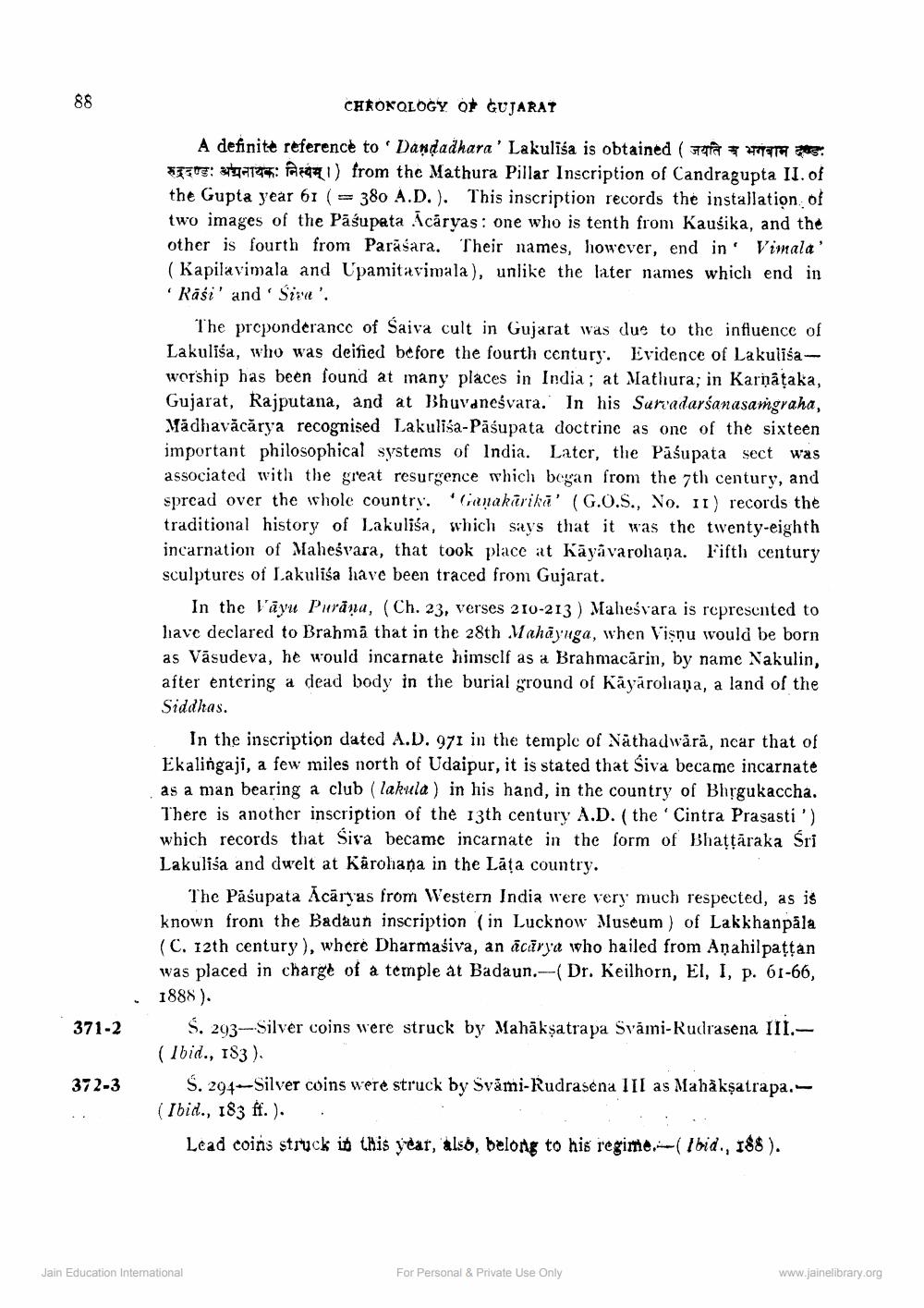________________
88
CHRONOLOGY OF GUJARAT
A definite reference to Dandadhara' Lakulisa is obtained ( 24TH : *FEUE: 98124 Aral) from the Mathura Pillar Inscription of Candragupta II. of the Gupta year 61 (= 380 A.D.). This inscription records the installation of two images of the Pāśupata Acaryas: one who is tenth from Kausika, and the other is fourth from Parabara. Their names, however, end in' Vimala' ( Kapilavimala and Upamitavimala), unlike the later names which end in "Rāśi' and 'Siva'.
The preponderance of Saiva cult in Gujarat was due to the influence of Lakulisa, who was deified before the fourth century. Evidence of Lakulisaworship has been found at many places in India; at Mathura; in Karnataka, Gujarat, Rajputana, and at Bhuvanesvara." In his Saradarśanasangraha, Madhavăcărya recognised Lakulisa-Pāśupata doctrine as one of the sixteen important philosophical systems of India. Later, the Pasupata sect was associated with the great resurgence which began from the 7th century, and spread over the whole country. "Ganakärika' (G.O.S., No. 11) records the traditional history of Lakulisa, which says that it was the twenty-eighth incarnation of Maheśvara, that took place at Käyåvarohaņa. Fifth century sculptures of Lakulisa have been traced from Gujarat.
In the l'äyu Purana, (Ch. 23, verses 210-213 ) Maheśvara is represented to liave declared to Brahma that in the 28th Mahayuga, when Visnu would be born as Vāsudeva, he would incarnate himself as a Brahmacärin, by name Nakulin, after entering a dead body in the burial ground of Käyāroliana, a land of the Siddhas.
In the inscription dated A.D. 971 in the temple of Näthadwārā, ncar that of Ekalingaji, a few miles north of Udaipur, it is stated that Siva became incarnate as a man bearing a club (lakula) in his hand, in the country of Bhrgukaccha. There is another inscription of the 13th century A.D. (the 'Cintra Prasasti') which records that Siva became incarnate in the form of Bhattāraka Sri Lakulisa and dwelt at Kārohana in the Lāța country.
The Pāśupata Ācāryas from Western India were very much respected, as is known from the Badaun inscription (in Lucknow Museum) of Lakkhanpala (C. 12th century), where Dharmašiva, an ācārya who hailed from Aşahil pattan was placed in charge of a temple at Badaun.--(Dr. Keilhorn, EI, I, p. 61-66, 1888).
S. 293-Silver coins were struck by Mahakşatra pa Svămi-Rudrasena III.(Ibid., 183)
Ś. 294--Silver coins were struck by Svāmi-Rudrasena III as Mahåksatrapa.(Ibid., 183 ff.).
Lead coins struck it this year, alsó, belong to his regime.---(Ibid., 188).
371-2
372-3
Jain Education Intemational
For Personal & Private Use Only
www.jainelibrary.org




